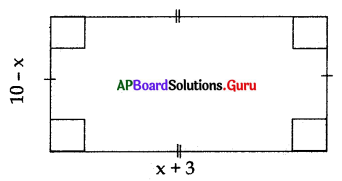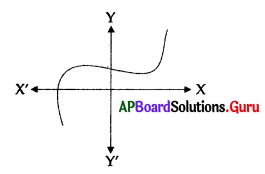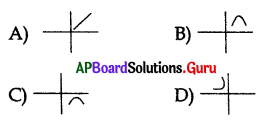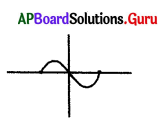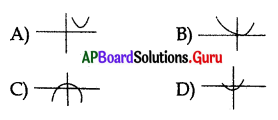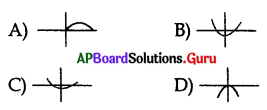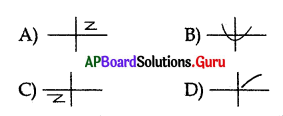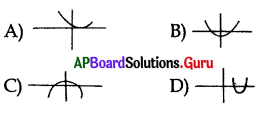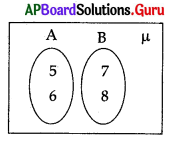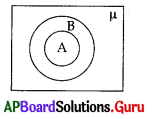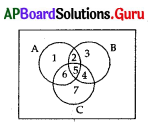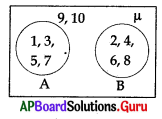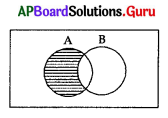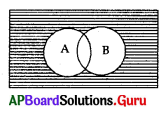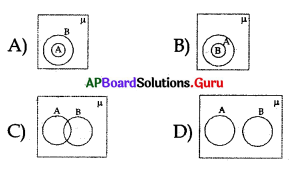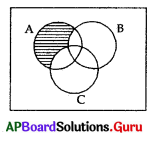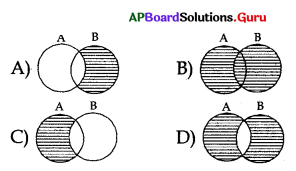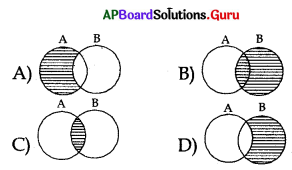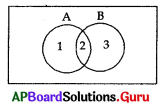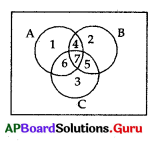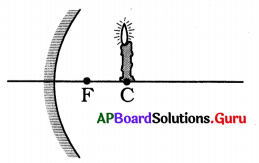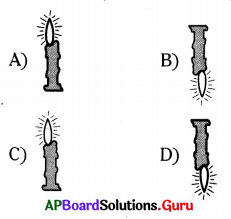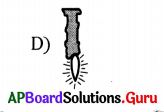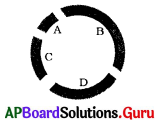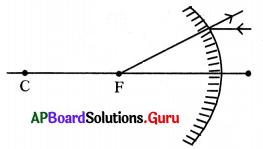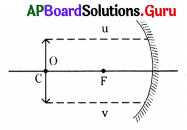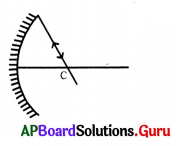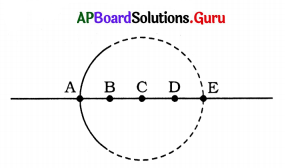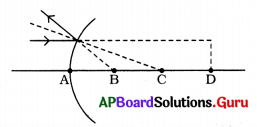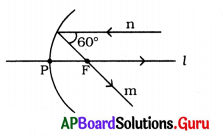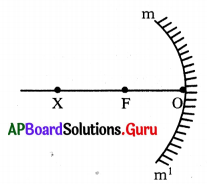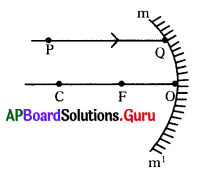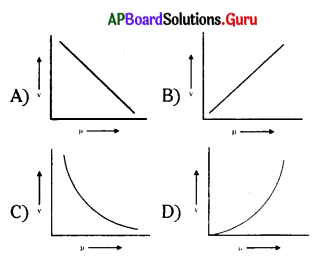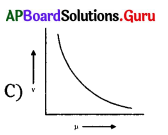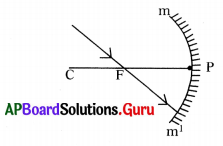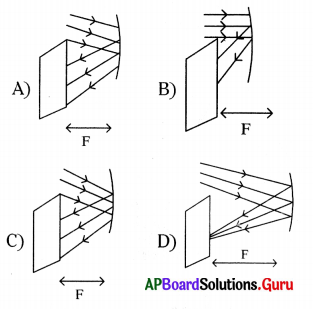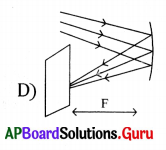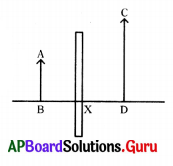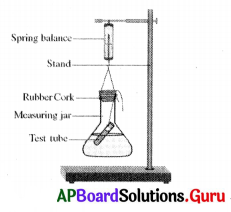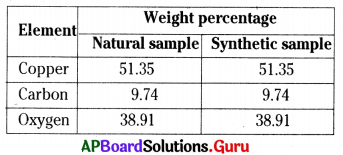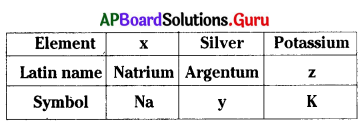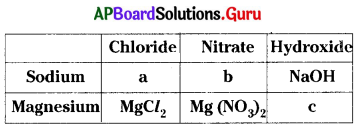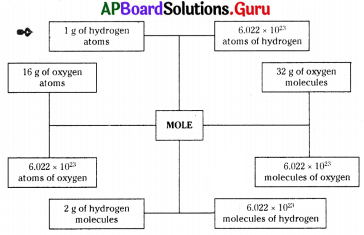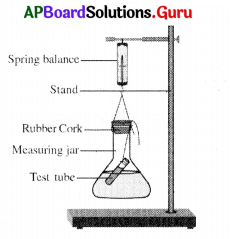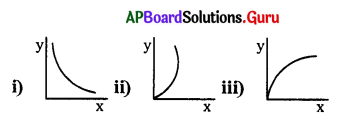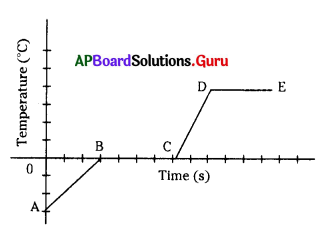Practice the AP 10th Class Maths Bits with Answers Chapter 10 Mensuration on a regular basis so that you can attempt exams with utmost confidence.
AP State Syllabus 10th Class Maths Bits 10th Lesson Mensuration with Answers
Question 1.
The volume of right circular cylinder with radius 6 cm and height 7 cm is ……………. cm3
A) 642
B) 927
C) 264
D) 792
Answer:
D) 792
Question 2.
A sphere of radius ‘r’ is inscribed in a cylinder. The surface area of the sphere is ……………. of the cylinder.
A) total surface area
B) curved surface area
C) volume
D) none of these
Answer:
B) curved surface area
![]()
Question 3.
The maximum length of the stick that can be placed in a cuboid, whose measurements are 8 × 4 × 1, is ……………………
A) 8
B) 9
C) 12
D) 13
Answer:
B) 9
Question 4.
The volume of a cube will be ………………… (in cm3), whose total surface area is 216 cm2.
A) 216
B) 196
C) 212
D) 144
Answer:
A) 216
Question 5.
Which of the following vessel can be filled with more water (A, B are in cylindrical shape) ?
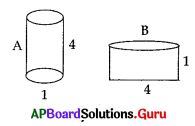
A) A
B) B
C) Both are equal
D) Cannot be determined
Answer:
B) B
Question 6.
The curved surface area of a sphere will be ………………………… , whose radius is 10 cm.
A) 239π
B) 400π
C) 221π
D) 129π
Answer:
B) 400π
Question 7.
Base area of the prism is 30 cm2 and its height is 10 cm. Then the volume of the prism is …………………
A) 300 cm3
B) 300 cm2
C) 150 cm2
D) 150 cm3
Answer:
A) 300 cm3
Question 8.
If the total surface area of cube is 96 cm3, then side of cube is ……………..
A) 3 cm
B) 5 cm
C) 6 cm
D) 4 cm
Answer:
D) 4 cm
Question 9.
Ratio of volumes of cylinder and cone whose radii are equal and having same height is
A) 1 : 3
B) 1 : 2
C) 3 : 1
D) 2 : 1
Answer:
C) 3 : 1
![]()
Question 10.
To find out the slant height of a cone, we use ………….. theorem.
A) Thales
B) S.A.S
C) Pythagoras
D) S.S.S
Answer:
C) Pythagoras
Question 11.
A.solid iron cuboid of dimensions 49 cm × 33 cm × 24 cm is melted to form a solid sphere, then its radius is
A) 21 cm
B) 13 cm
C) 24 cm
D) 18 cm
Answer:
A) 21 cm
Question 12.
In a right circular cone, [latex]\sqrt{(l+\mathbf{r})(l-\mathbf{r})}[/latex] =
A) slant height
B) vertical height
C) radius of the base
D) diameter of the base
Answer:
B) vertical height
Question 13.
Volume of a cube is 512 cm3, then its edge is
A) 8 cm
B) 6 cm
C) 14 cm
D) 18 cm
Answer:
A) 8 cm
Question 14.
T.S.A of a solid hemisphere whose radius is x cm is 147 π cm2. Then ‘x’ is
A) 21
B) 15
C) 8
D) 7
Answer:
D) 7
Question 15.
The number of cubes of edge 2 cm which can be cut out from a cube of edge 6 cm is
A) 9
B) 18
C) 27
D) 3
Answer:
C) 27
Question 16.
A cylinder and cone have bases of equal radii and arc of equal heights then the volumes are in the ratio is ……………….
A) 1 : 2
B) 2 : 1
C) 3 : 1
D) 1 : 3
Answer:
C) 3 : 1
![]()
Question 17.
A heap of the rice is in the form of cone. Its diameter is 12 m, height is 8 m, then the volume is ……………………
A) 200.5 Cu.cm
B) 300.14 Cu.cm
C) 301.44 Cu.m
D) 200.15 Cu.m
Answer:
C) 301.44 Cu.m
Question 18.
Combination shape of tanker is
A) Cylinder + 2 hemispheres
B) Cylinder + Circle
C) Cylinder + hemisphere
D) Cone + Circle
Answer:
A) Cylinder + 2 hemispheres
Question 19.
A hemisphere is cut out from one face of a cubical wooden block such that the diameter of the hemisphere is equal to the length of the cube, then the surface area of the remaining solid is …………………… sq. units.
A) a2(5 + [latex]\frac{\pi}{2}[/latex])
B) a2(6 + [latex]\frac{\pi}{2}[/latex])
C) a2(6 + [latex]\frac{\pi}{4}[/latex])
D) a2(4 + [latex]\frac{\pi}{4}[/latex])
Answer:
B) a2(6 + [latex]\frac{\pi}{2}[/latex])
Question 20.
The height of a cone and its base radius are 4 cm and 3 cm respectively. Then its slant height is ……………… cm.
A) 4
B) 3
C) 5
D) 6
Answer:
C) 5
Question 21.
A vessel is in the form of a hollow hemisphere mounted by hollow cylinder. The diameter of the hemisphere is 14 cm and the total height of the vessel is 13 cm, then the inner surface area of the vessel is ………………..
A) 308 cm2
B) 572 cm2
C) 672 cm2
D) 472 cm2
Answer:
B) 572 cm2
Question 22.
The radii of the base of cylinder and a cone are in the ratio of 3 : 4 and their heights are in the ratio of 2 : 3, then the ratio of the volumes is …………………….
A) 9 : 8
B) 9 : 4
C) 3 : 1
D) 27 : 64
Answer:
A) 9 : 8
Question 23.
A circus tent is cylindrical up to a height of 4 m and cone above it. If the diameter is 105 m and its slant height of cone is 40 m., then the total area of canvas required to built the tent is ……………..
A) 7920 m2
B) 7820 m2
C) 9720 m2
D) 2645 m2
Answer:
A) 7920 m2
![]()
Question 24.
An iron spherical ball of volume 232848 cm3 has been melted and converted into a cone with vertical angle of 120°. Then the height of the cone is
A) 42√3 cm
B) 42 cm
C) 21 cm
D) None
Answer:
A) 42√3 cm
Question 25.
If a cylinder and cone have bases of equal radii and are equal heights, then the ratio of their volumes is
A) 1 : 3
B) 2 : 3
C) 3 : 1
D) 3 : 2
Answer:
C) 3 : 1
Question 26.
If the curved surface area of a cone is 4070 cm2 and its diameter is 70 cm, then its slant height is
A) 27 cm
B) 37 cm
C) 47 cm
D) 57 cm
Answer:
B) 37 cm
Question 27.
Under the usual notations, the total surface area of a cuboid is
A) lb + bh + hl
B) [latex]\frac{l \mathrm{~b}+\mathrm{bh}+\mathrm{h} l}{2}[/latex]
C) 2(lb + bh + hl)
D) None
Answer:
C) 2(lb + bh + hl)
Question 28.
A joker’s cap is in the form of a right- circular cone whose base radius is 7 cm and height is 24 cm. The area of the sheet required to make 10 such caps is
A) 550 cm2
B) 5500 cm2
C) 55000 cm2
D) None
Answer:
B) 5500 cm2
Question 29.
A right-circular cylinder has base radius 14 cm and height 21 cm. The curved surface area is
A) 1848 cm2
B) 616 cm2
C) 3080 cm2
D) 12936 cm2
Answer:
A) 1848 cm2
Question 30.
The volume of the sphere of radius 21 cm is
A) 5544 cm3
B) 38808 cm3
C) 1155 cm3
D) 8983 cm3
Answer:
B) 38808 cm3
![]()
Question 31.
A sphere, a cylinder and a cone have the same radius and same height, then the ratio of their curved surface areas is
A) 2 : √3 : 4
B) 4 : 4 : √5
C) 3 : √5 : 4
D) None
Answer:
B) 4 : 4 : √5
Question 32.
The volume of the cone =
A) [latex]\frac {4}{3}[/latex]πr2
B) [latex]\frac {1}{3}[/latex]πr2h
C) πr2h
D) [latex]\frac {1}{2}[/latex]πr2h
Answer:
B) [latex]\frac {1}{3}[/latex]πr2h
Question 33.
If the diagonal of a cube ia 4√3, then the side of the cube is
A) 1
B) 2
C) 3
D) 4
Answer:
D) 4
Question 34.
If the volume of a hemisphere is 19404 cm3 then its radius is
A) 7
B) 14
C) 21
D) 28
Answer:
C) 21
Question 35.
A metallic sphere of radius 2 cm is melted to recast into the shape of a cylinder of radius 4 cm. Then the height of the cylinder is
A) [latex]\frac {1}{3}[/latex] cm
B) [latex]\frac {4}{3}[/latex] cm
C) [latex]\frac {2}{3}[/latex] cm
D) 1 cm
Answer:
C) [latex]\frac {2}{3}[/latex] cm
Question 36.
Three spheres of radii 6 cm, 1 cm and 8 cm are melted so as to form a single sphere. Then the radius of the new sphere is
A) 11 cm
B) 9 cm
C) 8 cm
D) 10 cm
Answer:
B) 9 cm
Question 37.
The radius and height of a right circular cone are 6 cm and 7 cm respectively. Then the volume of the cone is
A) 264 cu.cm
B) 300 cu.cm
C) 246 cu.cm
D) 256 cu.cm
Answer:
D) 256 cu.cm
![]()
Question 38.
Volume of a regular circular cylinder is ………….. cu. units.
A) πr2h
B) πrl
C) 2πrh
D) 2h(l + b)
Answer:
A) πr2h
Question 39.
Total surface area of cube is 54 cm2 . Then its side is ………………… cm.
A) 6
B) 9
C) 12
D) 3
Answer:
D) 3
Question 40.
For a right circular cone with radius = r, height = h and slant height = l, which of the following is not true ?
A) Always l > h
B) Always l > r
C) Always r > π
D) l2 = r2 + h2
Answer:
C) Always r > π
Question 41.
Lateral surface area of a right circular cone = πrl, where ‘l’ is ……………….
A) height of the cone
B) diameter of the cone
C) slant height of the cone
D) none of these
Answer:
C) slant height of the cone
Question 42.
The length, breadth and height of a room are 8 m, 6.5 m and 3.5 m respectively. Then the volume of air contained in the room is
A) 162 m3
B) 172 m3
C) 182 m3
D) 192 m3
Answer:
C) 182 m3
Question 43.
The diagonal of the cuboid with dimensions 9cm × 12cm × 20cm is ……………….
A) 41 cm
B) 32 cm
C) 25 cm
D) 21 cm
Answer:
C) 25 cm
Question 44.
Total Surface Area of the cuboid with dimensions 8 cm × 4 m × 2 cm is
A) 158 cm2
B) 112 cm2
C) 320 cm2
D) 191 cm2
Answer:
B) 112 cm2
![]()
Question 45.
The volume of a cuboid is 440 cm3 and the area of its base is 88 cm2, then its height is ………………. m.
A) 4
B) 5
C) 6
D) 7
Answer:
B) 5
Question 46.
Volume of the cube is 125 m3, then its side is ………………… cm.
A) 12
B) 6
C) 5
D) 10
Answer:
C) 5
Question 47.
Total Surface Area (TSA) of cube is 2400 cm2, then its side is ……………. cm.
A) 80
B) 60
C) 40
D) 20
Answer:
D) 20
Question 48.
Edge of a cube is 2 cm then Lateral Surface Area (LSA) is ……………….. cm2.
A) 13
B) 31
C) 61
D) 16
Answer:
D) 16
Question 49.
Total Surface Area of a cube whose side is 0.5 cm is ………………..
A) [latex]\frac {1}{4}[/latex] cm2
B) [latex]\frac {1}{8}[/latex] cm2
C) [latex]\frac {3}{4}[/latex] cm2
D) [latex]\frac {3}{2}[/latex]cm2
Answer:
D) [latex]\frac {3}{2}[/latex]cm2
Question 50.
The volume of a cube is 27 cm3, then its surface area is
A) 36cm2
C) 64 cm2
B) 54 cm2
D) 82 cm2
Answer:
B) 54 cm2
Question 51.
The radius of a conical tent is 7 m and its height is 10 m. Then the slant height of the cone is ………………..
A) 11.2 m
B) 10.2 m
C) 12.2 m
D) 14.2 m
Answer:
C) 12.2 m
Question 52.
The volume of a cone is 462 cm3. Its base radius is 7 cm then its height is ……………… cm.
A) 10.3
B) 7
C) 8
D) 9
Answer:
D) 9
![]()
Question 53.
Height of the cone is 15 cm, slant height is 17 cm, then radius of the cone is ………………… cm.
A) 8
B) 10
C) 16
D) 14
Answer:
A) 8
Question 54.
In a cone, Lateral Surface Area (LSA) is …………….. if slant height and radius of the base are 25 cm and 7 cm respectively.
A) 450 cm2
B) 550 cm2
C) 650 cm2
D) 150 [latex]\frac {1}{7}[/latex] cm2
Answer:
B) 550 cm2
Question 55.
The slant height of a cone is 10 cm and radius of the base is 7 cm, then Total Surface Area (TSA) = …………….. cm2.
A) 374
B) 478
C) 474
D) 378
Answer:
A) 374
Question 56.
The area of the base of a right circular cone is 78.5 cm2. If its height is 12 cms, then its volume is ………………. cm3.
A) 31.4
B) 314
C) 304
D) 404
Answer:
B) 314
Question 57.
The diameter of the base of a right circular cylinder is 14 cm and its height is 20 cm. Then its curved surface area is
A) 594 cm2
B) 1188 cm2
C) 440 cm2
D) 1540 cm2
Answer:
B) 1188 cm2
Question 58.
A solid iron rod has a cylindrical shape. Its height is 10 cm and base radius is 7 cm. Then volume of the.rod is
A) 1640 cm3
B) 1740 cm3
C) 1440 cm3
D) 1540 cm3
Answer:
D) 1540 cm3
Question 59.
The volume of a cylinder is 49,896 cm3 and its curved surface area is 4752 sq.cm. Then its radius is ……………… cm.
A) 12.3
B) 10
C) 21
D) 13.7
Answer:
C) 21
![]()
Question 60.
The ratio of the radius and height of a cylinder is 3 : 2. The radius is 21 cm, then Lateral Surface Area (LSA) = ………………… cm3
A) 2043
B) 1949
C) 1848
D) 1948
Answer:
C) 1848
Question 61.
In a cylinder d = 40 cm, h = 56 cm, then Curved Surface Area (CSA) = ……………. cm3.
A) 7040
B) 6040
C) 4040
D) 3040
Answer:
A) 7040
Question 62.
Volume of cylindrical bottle is 88 cm3, radius is 2 cm, then h = ……………… cm
A) 12
B) 10
C) 9
D) 7
Answer:
D) 7
Question 63.
The radii of two cylinders are in the ratio 2 : 3 and their heights are in the ratio of 5 : 3. Then the ratio of their volumes is ………………
A) 4 : 9
B) 9 : 4
C) 20 : 27
D) 27 : 20
Answer:
C) 20 : 27
Question 64.
The ratio of volumes of a cone and a cylinder whose diameters And heights are equal is
A) 3 : 1
B) 1 : 2
C) 2 : 1
D) 1 : 3
Answer:
D) 1 : 3
Question 65.
The length of equator on the globe is 88 cm, then r is ……………………..
A) 12 cm
B) 10 cm
C) 16 cm
D) 14 cm
Answer:
D) 14 cm
Question 66.
Two spheres are of radii in the ratio 3 : 5, then ratio of their surface areas is
A) 16 : 1
B) 25 : 9
C) 9 : 16
D) 9 : 25
Answer:
D) 9 : 25
Question 67.
If three metallic spheres of radii 6 cm, 8 cm and 10 cm are melted to form a single sphere, then the diameter of the sphere is ………………….
A) 12 cm
B) 16 cm
C) 20 cm
D) 24 cm
Answer:
D) 24 cm
![]()
Question 68.
The surface areas of two spheres are in the ratio 1:4, then the ratio of their volumes is …………………
A) 1 : 8
B) 1 : 64
C) 1 : 12
D) 1 : 16
Answer:
B) 1 : 64
Question 69.
Surface area of a sphere is 576π cm2, then volume is ……………….
A) 2304 π cm3
B) 1403 π cm3
C) 3404 π cm3
D) 4010 π cm3
Answer:
A) 2304 π cm3
Question 70.
The outer and inner radii of a hemisphere are 3 cm and 2 cm, then Total Surface Area (TSA) is ……………….. cm2
A) 9.7
B) 97 [latex]\frac {3}{7}[/latex]
C) 96 [latex]\frac {1}{2}[/latex]
D) 16 [latex]\frac {1}{4}[/latex]
Answer:
B) 97 [latex]\frac {3}{7}[/latex]
Question 71.
The surface area of sphere is 550 cm2. Its radius is ………………
A) 6.6 cm
B) 5.6 cm
C) 5.5 cm
D) 7.6 cm
Answer:
A) 6.6 cm
Question 72.
Volume of the possible biggest cylinder that can be made of a cube of side 14 cm is …………………… (in cm3)
A) 2156
B) 1078
C) 539
D) 428
Answer:
A) 2156
Question 73.
Height of a cylindrical iron rod is four times to its radius of the base. If it is melted and recast into spherical balls, number of balls thus formed
A) 4
B) 3
C) 2
D) 1
Answer:
B) 3
Question 74.
If a cuboid of dimensions 49 cm × 33 cm × 24 cm is melted and recast into a sphere, then radius of the sphere is
A) 24 cm
B) 21 cm
C) 18 cm
D) 13 cm
Answer:
B) 21 cm
![]()
Question 75.
Volume of the possible biggest cone that can be made out of a cube of side 4.2 cm is …………………. (in cm3)
A) 19.4
B) 14.6
C) 9.7
D) 8.4
Answer:
A) 19.4
Question 76.
The diameter of a metallic sphere is 6 cm. It is melted and drawn into a wire having diameter as 2 cm. Then the length of the wire (in cm) ………………….
A) 48
B) 12
C) 36
D) 24
Answer:
C) 36
Question 77.
In a cuboid if l = b = h, then it is a
A) cone
B) cube
C) cylinder
D) sphere
Answer:
B) cube
Question 78.
The base of a cone is ……………….
A) hemisphere
B) sphere
C) circle
D) square
Answer:
C) circle
Question 79.
The volume of cone of diameter’d’ and height ‘h’ is ………………. units3.
A) [latex]\frac{\pi \mathrm{d}^{2}}{2}[/latex]
B) [latex]\frac{\pi d^{2} h}{12}[/latex]
C) [latex]\frac{\pi \mathrm{dh}^{2}}{12}[/latex]
D) [latex]\frac{\pi d^{2}}{12}[/latex]
Answer:
B) [latex]\frac{\pi d^{2} h}{12}[/latex]
Question 80.
Two cones have their heights in the ratio 1 : 3 and radii 3 : 1. Then the ratio of their volumes is …………………
A) 3 : 1
B) 1 : 4
C) 1 : 3
D) 1 : 9
Answer:
A) 3 : 1
![]()
Question 81.
The vertical cross section of a cone is …………………
A) right triangle
B) scalene triangle
C) isosceles triangle
D) circle
Answer:
C) isosceles triangle
Question 82.
The horizontal cross section of a cylinder is
A) rectangle
B) square
C) circle
D) triangle
Answer:
C) circle
Question 83.
The vertical cross section of a cylinder is
A) rectangle
B) square
C) circle
D) right triangle
Answer:
A) rectangle
Question 84.
If ‘d’ is the diameter of a sphere, then its volume is …………………
A) [latex]\frac {2}{3}[/latex]πd3
B) [latex]\frac {1}{6}[/latex]πd3
C) [latex]\frac {4}{3}[/latex]πd3
D) [latex]\frac {1}{24}[/latex]πd3
Answer:
B) [latex]\frac {1}{6}[/latex]πd3
Question 85.
In what ratio are the volumes of a cylinder, a cone and a sphere, if each has the same diameter and same height
A) 1 : 3 : 2
B) 2 : 3 : 1
C) 3 : 1 : 2
D) 3 : 2 : 1
Answer:
C) 3 : 1 : 2
Question 86.
The surface area of a sphere 4 cm its diameter is ……………………
A) 16 πcm2
B) 23 π cm2
C) 64 π cm2
D) 12 π cm2
Answer:
A) 16 πcm2
Question 87.
The radius of a hemisphere is 7 cm, then its surface area is ………………….. cm2
A) 10
B) 150
C) 300
D) 462
Answer:
D) 462
![]()
Question 88.
The internal and external radii of a hemispherical bowl are r1 and r2 respectively. Then the surface area of the bowl is …………………..
A) 2π(r12 + r22)
B) π(r12 + r22)
C) π(r12 – r22)
D) 2π(r12 – r22)
Answer:
A) 2π(r12 + r22)
Question 89.
If the radius of a cylinder is doubled and its height remains unchanged, then its curved surface area is increased by times.
A) 2
B) 3
C) half
D) unchange
Answer:
B) 3
Question 90.
If a cone and a hemisphere have bases of equal radii, then its ratio of volumes is …………………
A) 2 : 1
B) 3 : 1
C) 4 : 1
D) 1 : 1
Answer:
A) 2 : 1
Question 91.
From a wooden cube of side Y cm, a right circular cylinder of maximum volume is cut. Then the volume of this cylinder is ………………. cm3.
A) [latex]\frac {1}{3}[/latex]πX3
B) πX3
C) [latex]\frac{\pi}{4}[/latex]X3
D) [latex]\frac {4}{3}[/latex] πX3
Answer:
C) [latex]\frac{\pi}{4}[/latex]X3
Question 92.
Three shots are made by melting a solid metallic sphere of radius 6 cm. If the radii of the two spheres are 3 cm and 4 cm respectively, then the radius of the third shot is ………………… cm.
A) 5
B) 2
C) 4
D) 3
Answer:
A) 5
Question 93.
The volume and the surface area of a sphere are numerically the same. Then the volume of the smallest cylinder in which the sphere is exactly kept is
A) 18π
B) 54π
C) 27π
D) 36π
Answer:
B) 54π
Question 94.
Lateral Surface Area of four walls of a room is ……………….. sq.units
A) 2h(l + b)
B) 2(l + b)
C) h(l + b)
D) 2 lbh
Answer:
A) 2h(l + b)
![]()
Question 95.
The radius of the base and height of a right circular cone are 9 cm and 15 cm respectively. Then volume of the cone is …………………. cm3.
A) 405 π
B) 1215 π
C) 81 π
D) 225 π
Answer:
A) 405 π
Question 96.
The heights of two cylinders are equal. The radii are R and r. Then the ratio of their volumes is
A) R2 : r2
B) R : r3
C) R : r2
D) R2 : r
Answer:
A) R2 : r2
Question 97.
The volume of a sphere of radius ‘r’ is obtained by multiplying its surface area by
A) [latex]\frac{4}{3}[/latex]
B) [latex]\frac{\mathrm{r}}{3}[/latex]
C) [latex]\frac{4 r}{3}[/latex]
D) 3r
Answer:
B) [latex]\frac{\mathrm{r}}{3}[/latex]
Question 98.
The ratio between the volumes of a sphere and a cylinder, if in cylinder, height is equal to the radius of base is ………………….
A) 3 : 1
B) 1 : 3
C) 3 : 4
D) 4 : 3
Answer:
D) 4 : 3
Question 99.
A solid sphere of radius ‘r’ is melted and cast into the shape of a solid cone of height ‘r’. The radius of the base of the cone is
A) 2r
B) 3r
C) 4r
D) 6r
Answer:
A) 2r
Question 100.
If a metallic sphere of radius ‘r’ is melted and recast into a metallic cone of height V units, then radius of the cone is …………………..
A) 2r
B) r
C) 3r
D) 4r
Answer:
A) 2r
Question 101.
To find out quantity of water inside a bottle, we measure
A) surface area
B) total surface area
C) volume
D) base area
Answer:
C) volume
![]()
Question 102.
To find out canvas needed for making a tent, we measure
A) area
B) volume
C) base area
D) radius of the base
Answer:
A) area
Question 103.
Geometry box is an example of
A) sphere
B) cone
C) cube
D) cuboid
Answer:
D) cuboid
Question 104.
Chalk-box is an example of
A) sphere
B) cone
C) cube
D) cuboid
Answer:
C) cube
Question 105.
If the radius of the base of a right circular cylinder is halved, keeping the height same, then the ratio of the volume of the cylinder thus obtained to the volume of the original cylinder is
A) 2 : 1
B) 1 : 2
C) 4 : 1
D) 1 : 4
Answer:
C) 4 : 1
Question 106.
The ratio of volumes of a cone and a cylinder whose radii and height are equal is
A) 3 : 1
B) 1 : 3
C) 1 : 2
D) 1 : 1
Answer:
B) 1 : 3
Question 107.
The radii of two spheres are in the ratio 2 : 3, then the ratio of their surface areas is ……………..
A) 3 : 2
B) 27 : 8
C) 8 : 27
D) 4 : 9
Answer:
D) 4 : 9
![]()
Question 108.
A cylinder, a cone and a hemisphere have bases of equal radii and are of equal heights. Then the ratio of their volumes is ………………
A) 3 : 1 : 2
B) 3 : 2 :1
C) 1 : 2 : 3
D) 1 : 3 : 2
Answer:
A) 3 : 1 : 2
Question 109.
Ratio between the volume of a cone and a cylinder is ……………………
A) 3 : 1
B) 1 : 3
C) 1 : 1
D) 4 : 1
Answer:
B) 1 : 3
Question 110.
The ratio between the surface area of sphere and hemisphere is ………………
A) 3 : 1
B) 1 : 3
C) 4 : 3
D) 3 : 4
Answer:
C) 4 : 3
Question 111.
In the adjacent figure, l is called
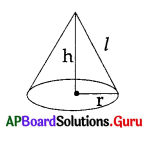
A) length
B) height
C) slant height
D) volume
Answer:
C) slant height
Question 112.
Identify cuboid from the following
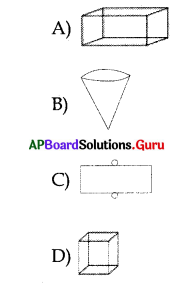
Answer:

Question 113.
Identify the shapes in the funnel
A) Cone, Circle
B) Cylinder, Rectangle
C) Cone, Cylinder
D) Sphere, Cylinder
Answer:
C) Cone, Cylinder
![]()
Question 114.
Which of the following item is in spherical shape ?
A) Laddu
B) Cricket Ball
C) Foot Ball
D) All the above
Answer:
D) All the above
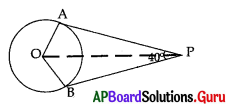
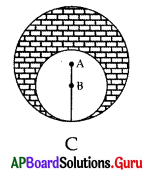
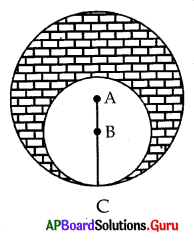
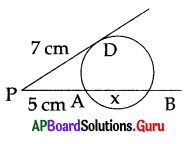
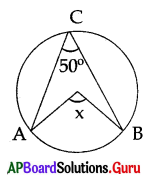
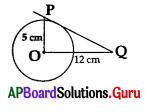
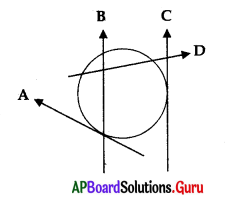
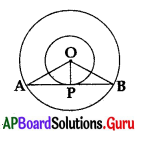
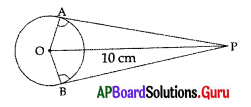
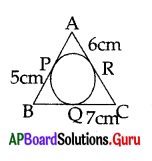
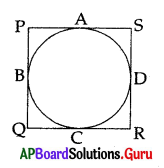
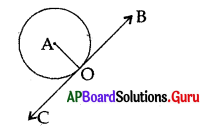
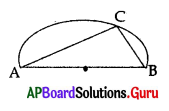 In the figure ∠ACB =
In the figure ∠ACB =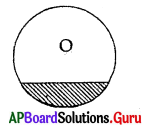
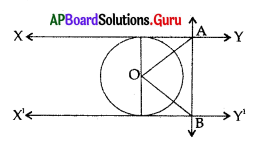
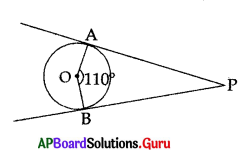
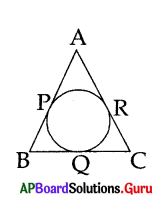
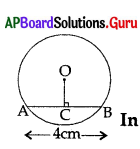 In the figure AB = 4cm, then BC = ……………….. cm
In the figure AB = 4cm, then BC = ……………….. cm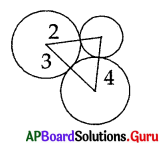
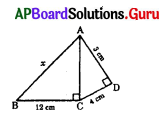
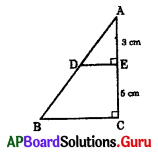
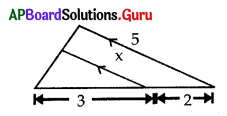
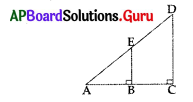
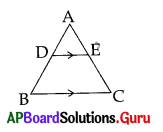
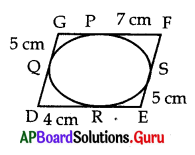
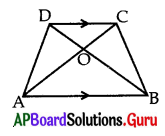
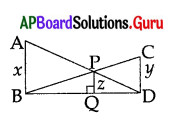
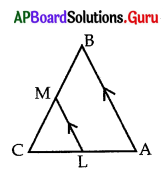
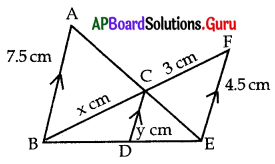

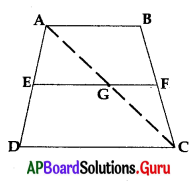
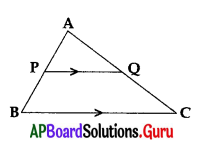
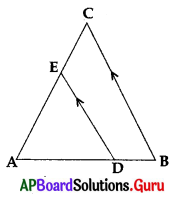
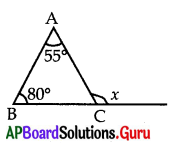
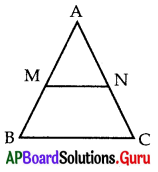
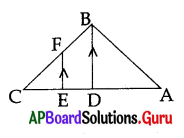
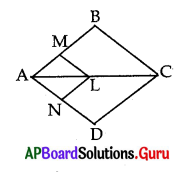
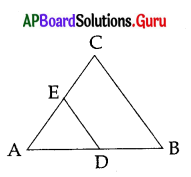
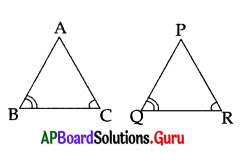
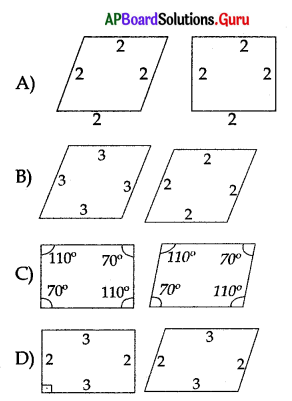
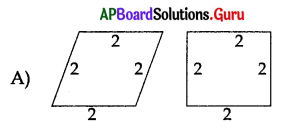
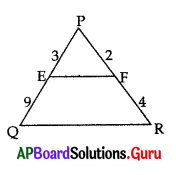
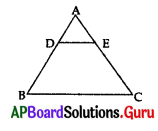
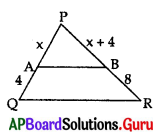
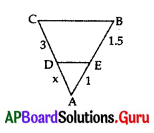
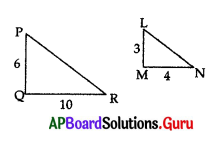
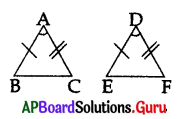
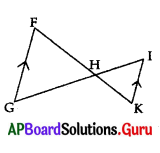
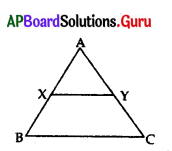
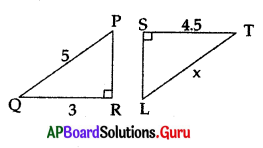
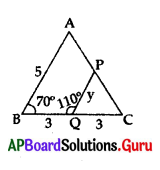
 =
=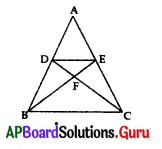
 BCED) =
BCED) =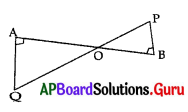
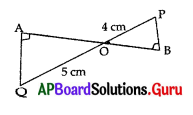
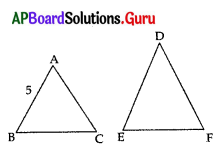
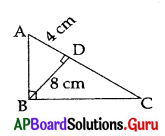
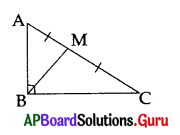
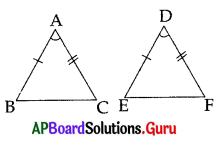
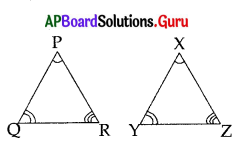
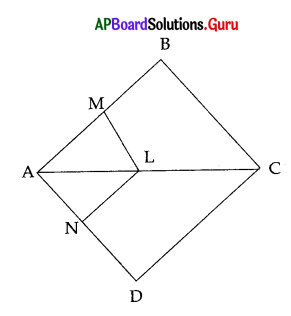

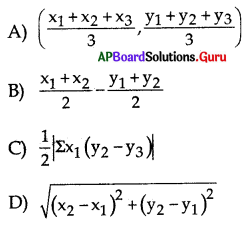

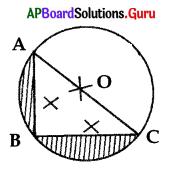
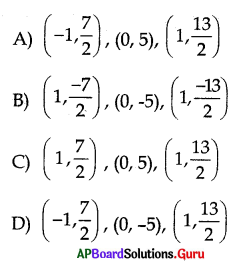

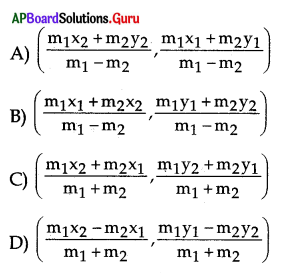

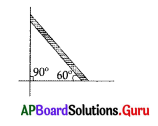


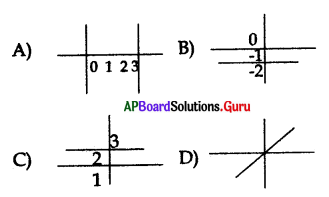
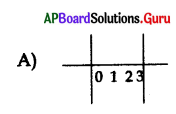
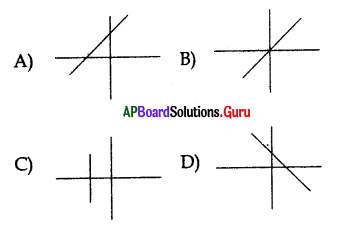
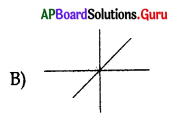

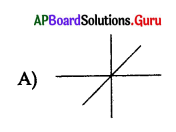
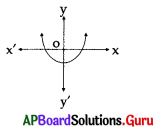
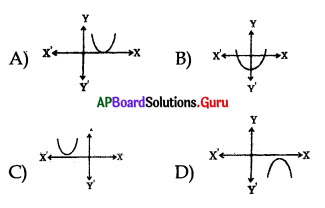
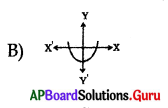
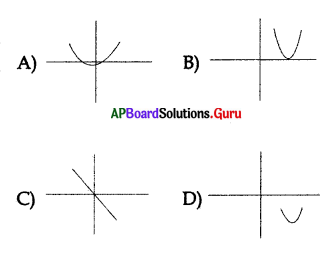
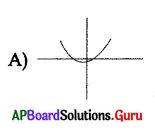
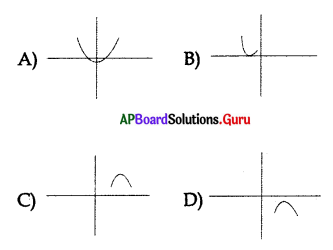
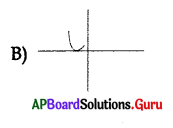
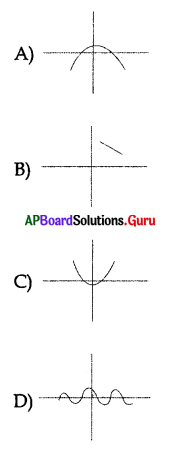


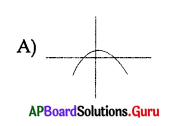

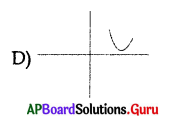
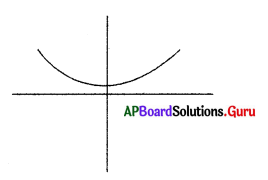
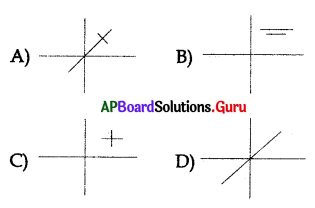
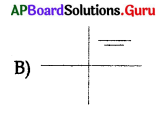
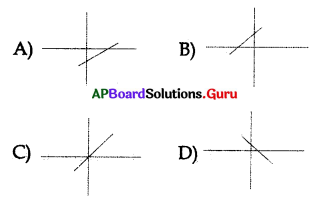
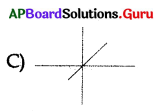
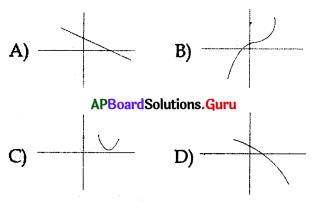
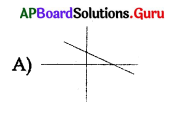
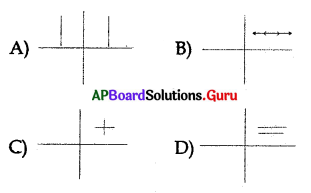
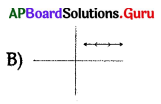
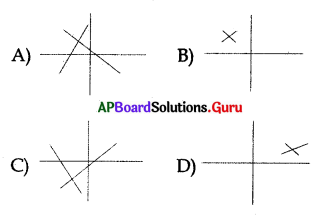
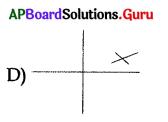
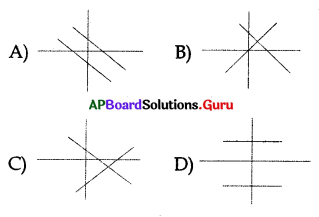
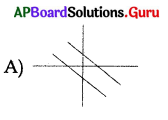
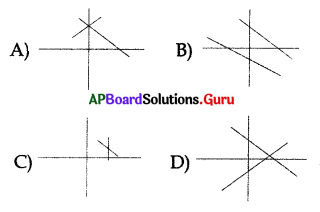
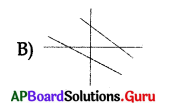
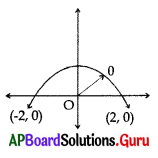
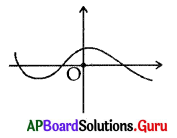
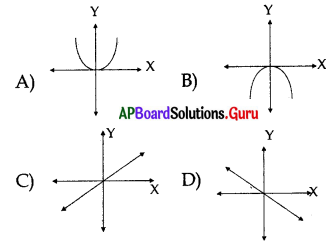
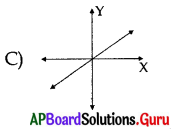
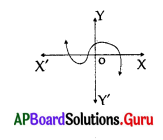 Number of zeroes can be identified by the adjacent figure.
Number of zeroes can be identified by the adjacent figure.